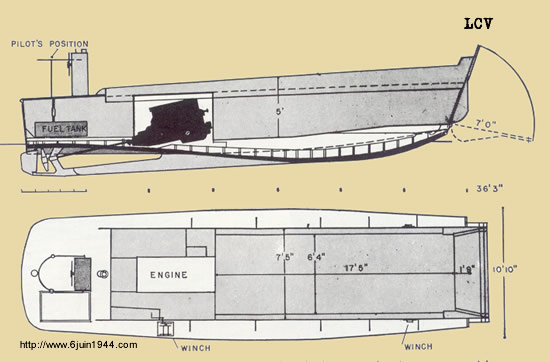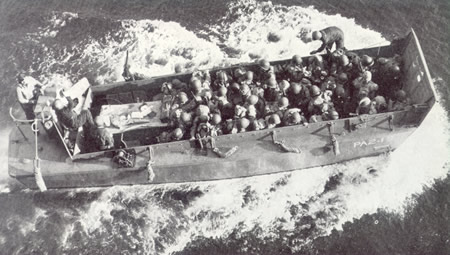Operational use: Small vehicle carrier for initial and subsequent landing waves. Also used as personnel and cargo carrier.
Description: Small, wood-hulled craft similar to the LCM in design. It has recently been superseded in production by the LCVP, an improved armed adaptation of the same hull. Transported on deck (APA, AKA, LST), in hold (LSD, LCT), or on single-or 3-tiered davits. It is not designed to be lowered when loaded but may be hoisted with maximum of seven litters in calm sea.
Capacity: One 1-ton truck, or 36 troops, or 10,000 lb. cargo or 1 Bren carrier (tight).
Endurance: 68 miles @ 9 kts.; 120 miles @ 7 kts.; 200 miles (max.) (later models).
Speed: 9 kts. (loaded).
Dimensions: Length, 36'3'' o.a. Beam, 10'10''.
Displacement: Light, 7 tons. - Loaded, 11 tons.
Draft: 1'6'' for'd, 2'6'' aft. - 2'2'' for'd, 2'10'' aft.
Armament: One .303 Lewis gun on British models only.
Crew: 3 men, 1 officer per 3 craft.
Armor: none.
Propulsion: Various Diesel or gasoline engines; 225-250 hp. |
 Allied Landing Craft and Ships
Allied Landing Craft and Ships
